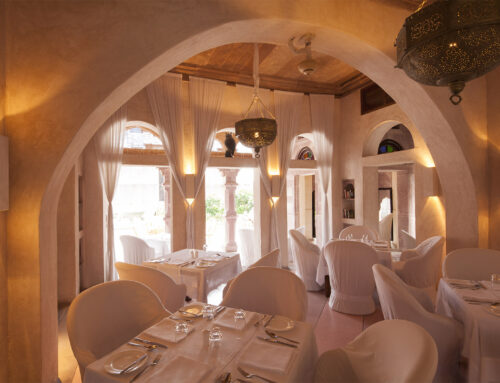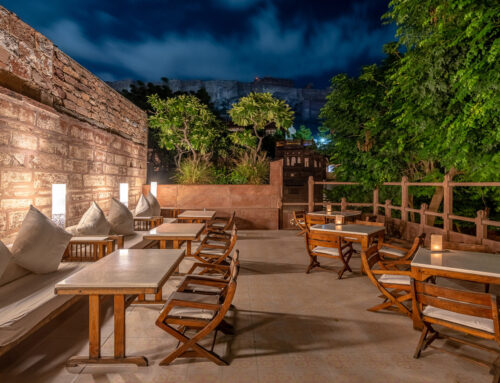The Old & New RAAS Haveli, Jodhpur
The story of RAAS is created using traditional, local materials like Jodhpur red sandstone, Indian rose wood (Sheesham), accents of brass and terrazzo, that are timeless and age gracefully. Built with the help of regional artisans and craftsmen of the highest calibre, hailing from families working in the trade for generations.
The eighteenth century RAAS Haveli holds three original old structures, that consist of the Haveli square, the Baradari and the Darikhana, built in Rajput architecture in red sandstone. The new structure holds edifices that are contemporary derivatives of the traditional architecture of Rajasthan. Developed as a double-skinned structure, the buildings have an outer skin of ‘jaalis’ (stone lattice work) and an inner skin of masonry and glass.
The jaali, made from Jodhpur sandstone, keeps the interior cool and veils it from the harsh desert sun, giving ventilation and privacy. Each jaali is hand cut with the help of local craftsmen skilled in lattice work, and creates a dynamic chiaroscuro on the rose red walls. In the evenings, the jaali screens transform the buildings into lanterns framing the site, aglow with golden light.

The sense of meandering through narrow bylanes of the old walled city extends into the RAAS property. The primary new building wing acts like a second gate that holds on to the dramatic ‘reveal’ as one enters the main courtyard.
As one walks through the gate, a glorious vista of the Mehrangarh Fort meets the eye, intermingling with the red sandstone of the old Haveli buildings, and the new structures, amidst a lush landscape of trees. The monochromatic palette of the local Jodhpur sandstone in all its hues and textures blends with the historic Fort seamlessly. The new buildings complement both the heritage structures and the walled city dwellings, in their hues, sandstone and architecture.
RAAS extends its ethos of sustainability into giving employment to locals from regional communities, sourcing the ir architectural materials and crafts persons locally, growing organic produce for the restaurants within a 30 km radius, and holding an earnest focus on using only sustainable materials within the property. With a beautiful amalgamation of classic and contemporary, RAAS, true to its name, effortlessly translates the ‘essence’ of the Rajputana era, while seamlessly blending the old and new.
_
Written by Anushka Gupta @anushkagupta5
Photo Credit : Avesh Gaur














